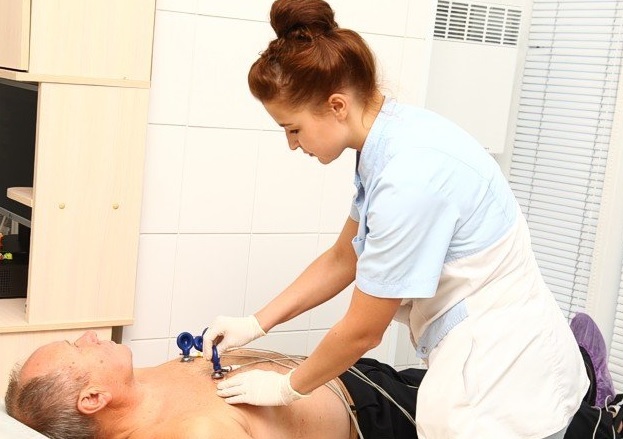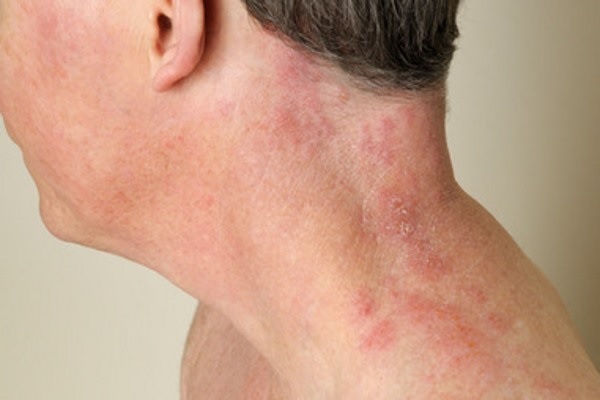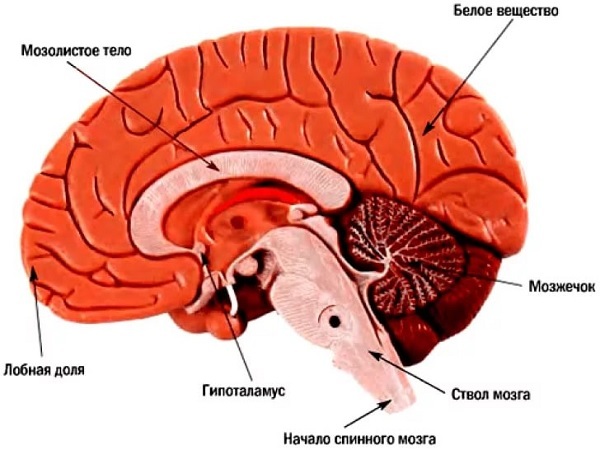Vegeto-vascular dystonia according to the hypertonic type
Contents:
- reasons
- main manifestations of VSD on hypertonic type
- Treatment of patients with VSD on hypertonic type
- result
 pathophysiological basis of vegetative-vascular dystonia( VVD) - the imbalance between the departments of the functions of the autonomic system in conjunction with changes in the emotional sphere( lability the psyche).VSD is due to the patient's constitution, the nature of the character, the lability of mental reactions.
pathophysiological basis of vegetative-vascular dystonia( VVD) - the imbalance between the departments of the functions of the autonomic system in conjunction with changes in the emotional sphere( lability the psyche).VSD is due to the patient's constitution, the nature of the character, the lability of mental reactions.
Causes of
Factors( conditions, diseases) leading to the development of IRR:
- Stress state( acute or long-lasting).
- Violation of the balance of hormones( genital, corticosteroids and others).
- Intoxication( external, internal).
- Trauma of the skull and brain.
- Somatic diseases, blood diseases( anemia), endocrine pathologies.
- Mental diseases.
- Occupational diseases, exposure to harmful factors of production.
- Acclimatization period( in other weather conditions, time zone).
- Caffeine consumption, smoking, lack of movement.
VSD manifests itself as a violation of the functions of the nervous system, sympathetic( sympathicotonia) and parasympathetic department( vagotonia).With sympathicotonia, there is a tendency to increase pressure, with vagotonia, arterial hypotension is revealed. In ICD-10, the VSD on the hypertensive type is not included, if necessary, is encrypted as G90( "autonomic nervous system disorders").
 Find out why the VSD is dangerous and under which diseases vegetative-vascular dystonia is masked.
Find out why the VSD is dangerous and under which diseases vegetative-vascular dystonia is masked.
Read what they are treating VSD: the main groups of drugs.
Main manifestations of hypertensive VSD
type In this type VSD reaction expressed by the sympathetic nervous system, which manifests the following symptoms:
- propensity to increased pressure( a vascular arterial bed).
- Increased respiration( with a decrease in its depth) and contractions of the heart.
- Enlarged pupils, eye shine, dryness of mucous membranes.
- A tendency to the appearance of constipation, indigestion.
- Changes in the psyche: anxiety, endurance, the ability to perform large volumes of work, a reduction( up to the complete lack of) sleep duration( no daytime sleepiness), anxiety, emotion, sensitivity to criticism, aggression, resentment.
main symptoms of VSD on hypertonic type have been described in the last century psychiatrist V. P. Protopopovym( Protopopova syndrome): tachycardia, characteristic bright eyes, combined with dilated pupils, dryness of the mouth, frequent constipation. Highly expressed displays sympathicotonia arise when vegetovascular Stroke( W. Cannon syndrome): a sharp and substantial increase in pressure, mydriasis( persistent), pale skin color, sweating, fever, increased blood glucose concentration.
 Panic attacks and "vegetative storms" are one of the manifestations of the VSD according to the hypertonic type. At the same time, emotional manifestations are expressed: anxiety, unaccountable fear right up to a panic state, a sense of imminent disaster, an obsessive fear of dying. Breathing is difficult, superficial, frequent. There is shortness of breath, the patient has a subjective feeling that he suffocates.
Panic attacks and "vegetative storms" are one of the manifestations of the VSD according to the hypertonic type. At the same time, emotional manifestations are expressed: anxiety, unaccountable fear right up to a panic state, a sense of imminent disaster, an obsessive fear of dying. Breathing is difficult, superficial, frequent. There is shortness of breath, the patient has a subjective feeling that he suffocates.
On the part of the digestive system: nausea, pain in the stomach, in the epigastrium, throughout the abdomen - common. Severe tachycardia, sweating, a feeling of heat( or chills), a violation of sensitivity in the hands, feet( numbness, a feeling of "crawling," paresthesia).Usually this state does not last long. Rarely the duration of the attack exceeds 20-30 minutes. At the end of the attack, there is frequent urination, polyuria, and sometimes diarrheal syndrome.
Treatment of patients with VSD on hypertonic type
Before prescribing therapy adjust work and rest: normalize sleep, sleep time and optimize recovery, refuse to sleep late. So, sleep should last at least 7-8 hours( at night).In addition, it is necessary to stop smoking and eating products containing caffeine( tea, coffee).
Pharmacotherapy VSD on hypertonic type involves administering antihypertensive drugs( exclusively physician independent assignment is unacceptable) from the group of ACE-blockers, beta-blockers, diuretics and the like. D. Results assignment nootropics( pikamilon, Phenibutum) with primary sedation andVegetable soothing agents( tincture of valerian, peony).
 Find out how children's VSD manifests itself: signs, complications, treatment, and factors that cause pathology.
Find out how children's VSD manifests itself: signs, complications, treatment, and factors that cause pathology.
Read, differences of vegetative-vascular dystonia during pregnancy, menopause and during menstruation.
What is a sympathetic adrenal crisis: the causes, symptoms, treatment, prevention.
The result of the
VSD according to the hypertonic type is a condition that can be provoked by a variety of different diseases. The basis is the disruption of the sympathetic nervous system. One of the significant clinical manifestations is a steady rise in pressure in the arterial bed. Treatment of vegetative-vascular dystonia according to the hypertonic type is nonspecific, suggesting the appointment of antihypertensive and sedative agents.
We should not think that VSD is a "non-serious" disease that does not require timely treatment. So, in the event of the sympathetic-adrenal crisis consequences could be serious: to pressure the peak there is a possibility of hemorrhagic stroke( especially at an older age) that can lead to death, cause of disability, trigger the development of paralysis, paresis, cause disruption of socialization, Impossibility to work and be adapted in society.
write a question in the form below:



